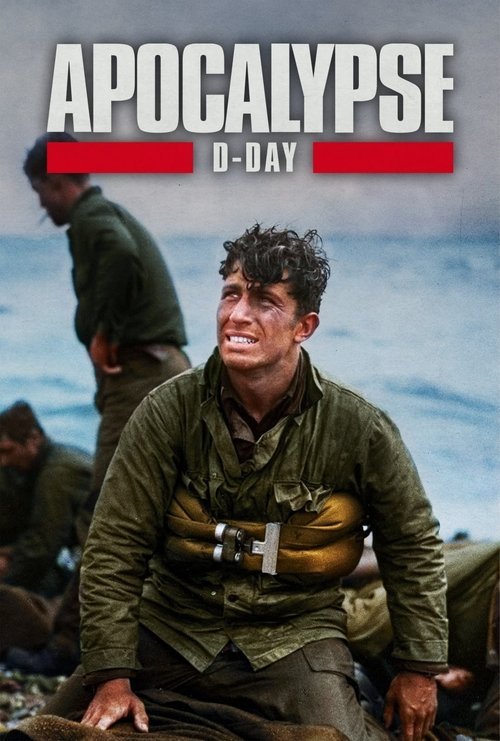
Ask Your Own Question
What is the plot?
In the year 1914, the series "Women at War" opens in a small French village on the brink of World War I. The lives of four women--Marguerite, a nurse; Suzanne, a factory worker; Caroline, a wealthy widow; and the young and spirited Aline--are introduced. Each woman is shown in her daily life, highlighting their struggles and aspirations. Marguerite is dedicated to her nursing duties, often tending to the wounded soldiers, while Suzanne works tirelessly in a munitions factory, grappling with the harsh realities of war. Caroline, mourning her late husband, finds herself drawn into the complexities of her family's estate, and Aline, eager for adventure, dreams of a life beyond the confines of her village.
As the war begins, the village is thrown into chaos. Men enlist, leaving their families behind. Marguerite's brother, a soldier, is among those who go off to fight. The emotional weight of their departure is palpable, with Marguerite feeling a mix of pride and fear for her brother's safety. Meanwhile, Suzanne faces the challenges of working in the factory, where the pressure to produce munitions intensifies. She witnesses the toll the war takes on her fellow workers, leading to a growing sense of camaraderie among the women.
Caroline, struggling with her grief, decides to take charge of her late husband's estate. She begins to manage the family business, which is struggling due to the war's impact. Her determination to keep the estate afloat reveals her resilience, but she faces opposition from the male-dominated society that underestimates her capabilities. Aline, inspired by the stories of bravery, secretly dreams of joining the fight, leading to tension with her family, who want to protect her.
As the war progresses, Marguerite is called to serve at a military hospital. The scenes depict the harrowing conditions she encounters, with soldiers arriving in critical condition. Marguerite's compassion shines through as she navigates the emotional toll of her work, forming bonds with the soldiers and their families. Her character deepens as she grapples with the loss of life and the impact of war on her community.
Suzanne's life takes a turn when she becomes involved in a labor strike at the factory. The women demand better working conditions and pay, leading to confrontations with factory owners and police. The tension escalates, and Suzanne emerges as a leader, rallying her fellow workers. This pivotal moment showcases her growth and determination to fight for their rights, despite the risks involved.
Caroline's journey intertwines with the other women as she becomes more involved in the community's war efforts. She organizes fundraising events and supports the families of soldiers. Her character evolves from a grieving widow to a proactive leader, showcasing her strength and resolve. However, she faces personal challenges, including a budding romance that complicates her focus on her responsibilities.
Aline's desire to join the war effort culminates in a dramatic decision. She disguises herself as a boy and enlists, seeking adventure and a chance to prove herself. The emotional farewell with her family is heart-wrenching, as they are unaware of her true intentions. Aline's journey into the war reveals the harsh realities of combat, contrasting her initial romanticized notions of heroism.
As the series progresses, the women's lives become increasingly intertwined. Marguerite, Suzanne, Caroline, and Aline support each other through their respective struggles, forming a sisterhood that transcends their individual challenges. They share moments of joy and sorrow, highlighting the strength of their bond amidst the backdrop of war.
The climax of the series occurs when the women face a significant turning point. A major battle takes place, and the impact is felt deeply in their village. Marguerite is on the front lines, tending to the wounded, while Suzanne's factory is targeted, leading to a devastating explosion. The aftermath of the battle brings loss and heartache, forcing the women to confront their fears and the reality of their sacrifices.
In the final episodes, the war's toll becomes evident as the women navigate the aftermath of the conflict. Marguerite struggles with PTSD, haunted by the memories of the battlefield. Suzanne continues to fight for workers' rights, now more determined than ever. Caroline faces the challenge of rebuilding her life and estate, while Aline returns home, forever changed by her experiences.
The series concludes with a poignant reflection on the resilience of women during wartime. Each character has undergone significant growth, and their journeys highlight the strength found in unity and the enduring spirit of those who faced the challenges of war. The final scenes depict the women coming together, symbolizing hope and the promise of a new beginning as they look toward the future, forever marked by their experiences.
What is the ending?
In the ending of "Women at War," the main characters face the consequences of their choices during the tumultuous times of World War I. The series culminates in a series of emotional confrontations and resolutions, leading to significant changes in their lives and relationships.
As the final episodes unfold, we see the characters grappling with their past decisions and the impact of the war on their futures. The story concludes with a sense of hope and resilience, as the women find strength in their bonds and the courage to forge new paths.
The final scenes of "Women at War" unfold against the backdrop of a war-torn landscape, where the emotional weight of the characters' journeys comes to a head.
Scene 1: The hospital is bustling with activity as nurses and doctors work tirelessly to care for the wounded. Among them is Marguerite, who has been deeply affected by the loss of her loved ones. Her hands tremble as she tends to a soldier, reflecting her internal struggle with grief and the harsh realities of war. The camera lingers on her face, capturing the determination mixed with sorrow in her eyes.
Scene 2: Meanwhile, in a nearby village, the tension between the local women and the occupying forces escalates. The character of Louise stands at the forefront, rallying the women to resist the oppression they face. Her fiery spirit ignites a sense of unity among them, and they prepare to take a stand. The scene is charged with emotion as they share their fears and hopes, solidifying their resolve to fight for their freedom.
Scene 3: In a quiet moment, we see the character of Émilie, who has been torn between her loyalty to her family and her desire for independence. She stands alone in a field, contemplating her choices. The wind rustles through the grass, symbolizing the change she yearns for. As she makes her decision to leave her past behind, a sense of liberation washes over her, and she walks away with newfound purpose.
Scene 4: The climax of the series occurs during a confrontation between the women and the occupying soldiers. The tension is palpable as they stand their ground, refusing to be intimidated. Marguerite, Louise, and Émilie come together, embodying the strength of their shared experiences. The scene is filled with powerful dialogue, as they express their determination to reclaim their lives and assert their identities.
Scene 5: As the dust settles, the aftermath of the confrontation reveals the fates of the main characters. Marguerite, having faced her grief, finds solace in her role as a caregiver, vowing to honor those she lost by helping others heal. Louise emerges as a leader, inspiring the women to continue their fight for justice and equality. Émilie, now free from her past constraints, embarks on a journey of self-discovery, ready to embrace the future.
Scene 6: The series concludes with a poignant montage of the women moving forward in their lives. The camera captures moments of laughter, solidarity, and resilience, underscoring the bonds they have forged through their struggles. As the screen fades to black, the message of empowerment and the strength of women in the face of adversity resonates, leaving the audience with a sense of hope for the future.
In the end, "Women at War" encapsulates the transformative power of courage, friendship, and the relentless pursuit of freedom, as each character finds their place in a world forever changed by war.
Is there a post-credit scene?
"Woman at War," the 2022 series, does not feature a post-credit scene. The show concludes its narrative without additional scenes after the credits, focusing instead on the resolution of its central themes and character arcs within the main episodes. The final moments of the series encapsulate the struggles and triumphs of the characters, leaving viewers with a sense of closure regarding their journeys. The absence of a post-credit scene emphasizes the weight of the story's conclusion, allowing the audience to reflect on the emotional and historical significance of the events portrayed.
What are the main conflicts faced by the characters in Women at War?
The characters in Women at War face a multitude of conflicts, both personal and societal, as they navigate the challenges of World War I. Each woman grapples with the impact of war on their lives, relationships, and roles in society. For instance, the character of Marguerite struggles with her desire for independence while dealing with the expectations placed upon her as a woman in wartime. Meanwhile, the character of Louise confronts the harsh realities of loss and the emotional toll of her husband's absence at the front. These conflicts drive the narrative and highlight the resilience and strength of women during this tumultuous period.
How does the character of Marguerite evolve throughout the series?
Marguerite begins as a sheltered woman, primarily focused on her social status and the expectations of her family. As the war progresses, she is thrust into situations that challenge her beliefs and force her to confront her own desires for freedom and agency. Her evolution is marked by moments of defiance against societal norms, particularly as she takes on roles traditionally reserved for men, such as working in a factory. By the end of the series, Marguerite emerges as a more empowered individual, having discovered her own strength and the importance of solidarity among women.
What role does the character of Louise play in the narrative, and how does her story intersect with other characters?
Louise serves as a poignant representation of the emotional toll of war. Her story is deeply intertwined with that of Marguerite and other women, as she navigates the pain of losing her husband to the war. Louise's character embodies the struggles of many women who are left behind, and her interactions with Marguerite highlight the contrasting ways women cope with grief and loss. Throughout the series, Louise's journey of mourning and eventual acceptance serves as a catalyst for the other characters to confront their own challenges, fostering a sense of community and shared experience among them.
What are the significant turning points for the character of Geneviève in Women at War?
Geneviève experiences several significant turning points that shape her character arc. Initially, she is portrayed as a devoted mother and wife, but as the war escalates, she is forced to confront the harsh realities of her husband's absence and the dangers that come with it. A pivotal moment occurs when she decides to take a stand against the local authorities who are dismissive of women's contributions to the war effort. This act of defiance not only empowers her but also inspires other women in her community. Geneviève's transformation from a passive figure to an active participant in the war effort marks a crucial development in her character.
How do the relationships between the women in Women at War evolve over the course of the series?
The relationships between the women in Women at War evolve significantly as they face the challenges of war together. Initially, there is a sense of rivalry and competition among them, particularly as they vie for roles and recognition in a male-dominated society. However, as they endure shared hardships, such as loss, fear, and the struggle for survival, their bonds deepen. Moments of vulnerability and support emerge, leading to a strong sisterhood that transcends their differences. By the end of the series, the women have formed a united front, showcasing the power of solidarity and friendship in overcoming adversity.
Is this family friendly?
"Woman at War," produced in 2022, is a historical drama set against the backdrop of World War I, focusing on the lives of women who take on various roles during the war. While the show highlights themes of resilience, empowerment, and the impact of war on society, it does contain several elements that may be objectionable or upsetting for children or sensitive viewers.
-
War Violence: The series depicts the harsh realities of war, including battle scenes that may show injury or death, which could be distressing for younger audiences.
-
Emotional Trauma: Characters experience significant emotional turmoil due to loss, separation, and the pressures of wartime, which may resonate deeply with sensitive viewers.
-
Grief and Loss: The narrative includes themes of mourning and the impact of losing loved ones, which could be upsetting for children or those who have experienced similar losses.
-
Social Injustice: The show addresses issues of gender inequality and the struggles women face, which may include scenes of discrimination or oppression that could be challenging for younger viewers to process.
-
Mature Themes: There are underlying themes of sacrifice, survival, and moral dilemmas that may be complex and difficult for children to fully understand.
Overall, while "Women at War" offers a powerful narrative about women's strength and resilience, it also contains elements that may not be suitable for all audiences, particularly younger children or those sensitive to the themes of war and loss.














































